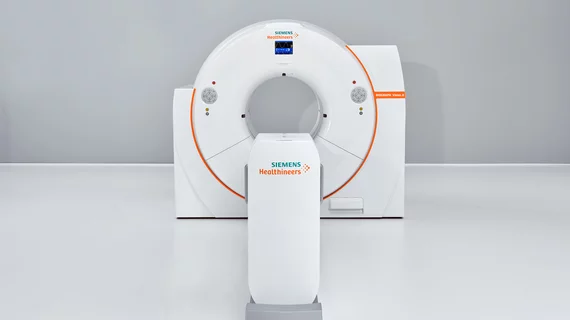FDA clears PET/CT scanner from Siemens Healthineers
The U.S. Food and Drug Administration has cleared a new PET/CT device from Siemens Healthineers, the company announced recently.
The Biograph Vision.X is a positron emission tomography/computed tomography scanner boasting one of the industry’s fastest times of flight (178 picoseconds). Tiny crystals allow for higher spatial resolution, with the Biograph able to deliver an estimated 20% performance improvement, bolstering throughput while reducing radiotracer costs.
“The Biograph Vision.X’s record-shattering, ultrafast time of flight delivers an image resolution that allows even the smallest lesions to rise above the noise,” James Williams, PhD, head of Siemens Healthineers’ molecular imaging division, said in a Nov. 22 company announcement. “This extremely high level of resolution can help physicians detect small lesions and provide patients with a precise diagnosis.”
Siemens also touted the scanner’s built-in artificial intelligence capabilities, allowing users to increase operational efficiency and accelerate patient workflows. The Biograph Vision.X additionally offers a large 78-centimeter bore, allowing for easier positioning of bariatric patients or radiotherapy devices.

